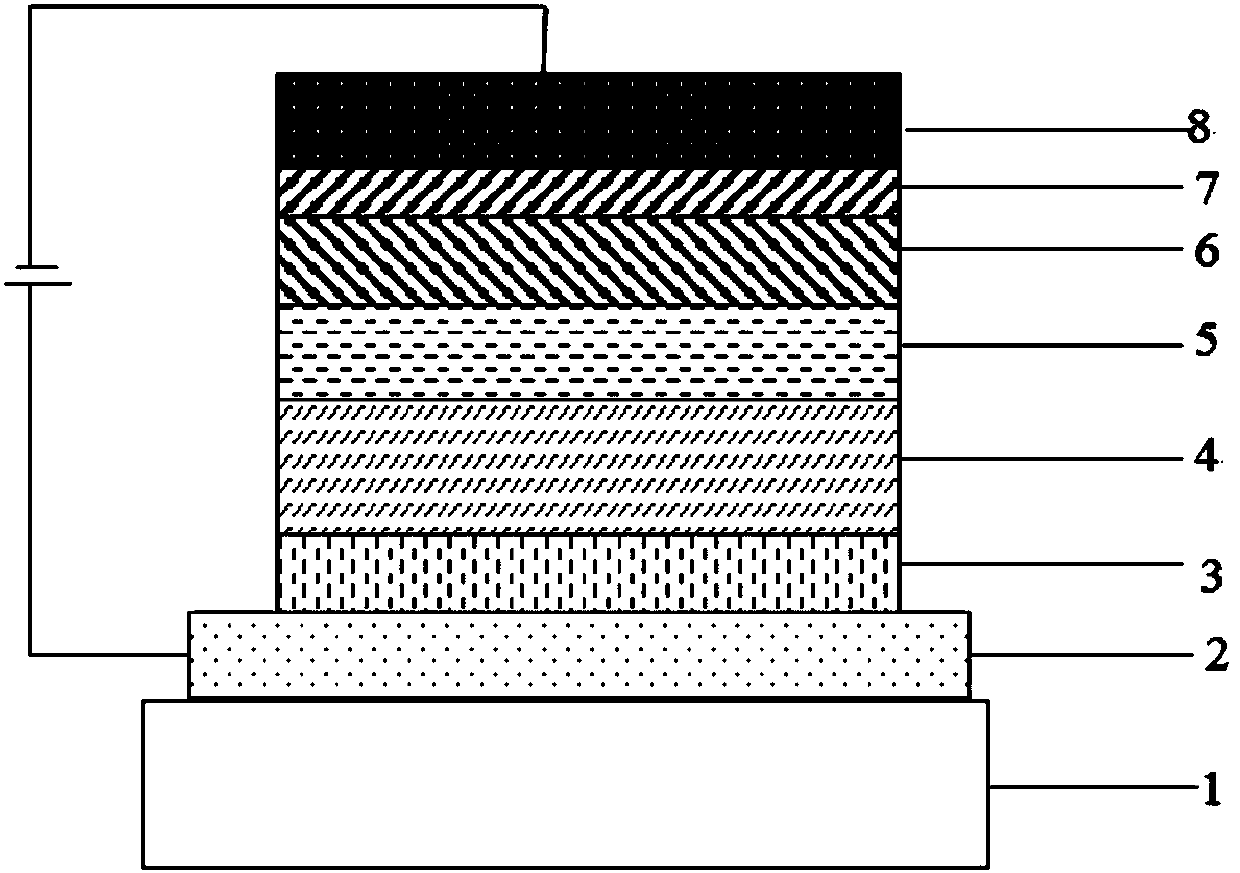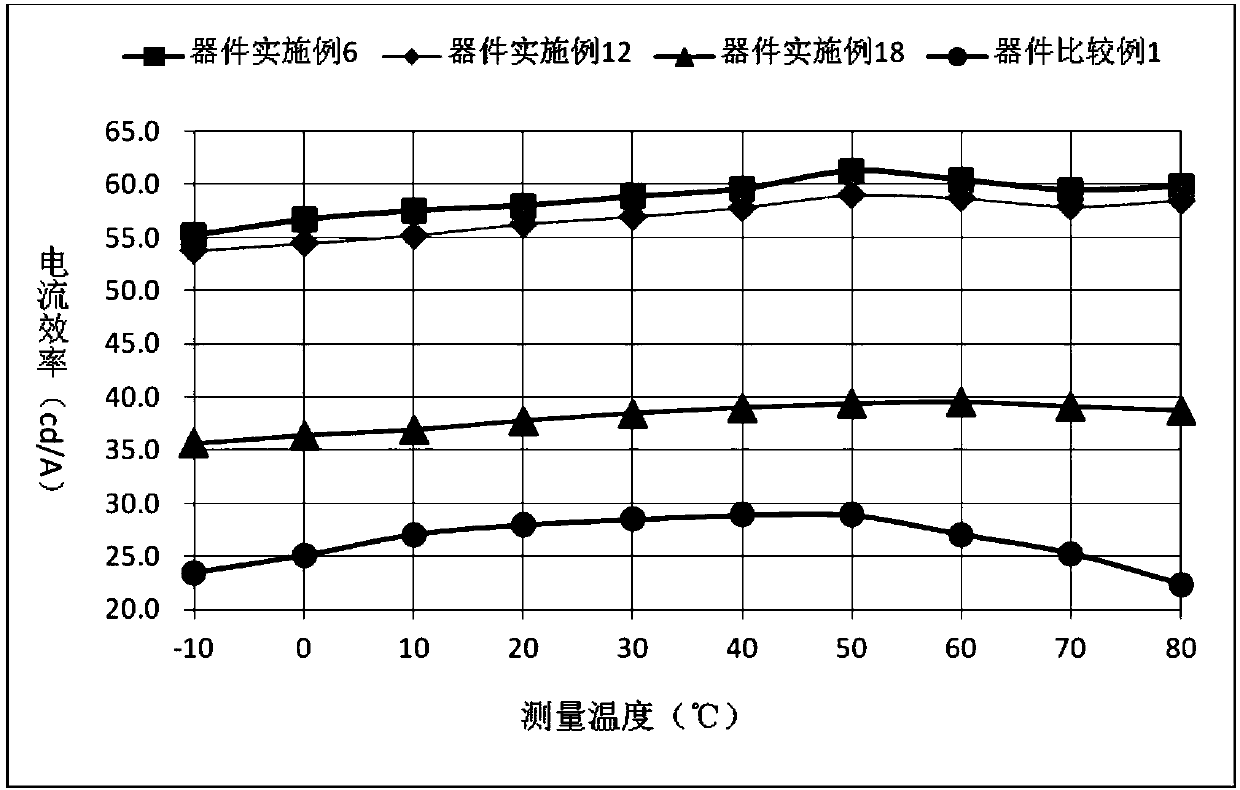Compound with benzonitrile or thio-benzonitrile and application thereof in organic light-emitting devices
An electroluminescent device, the technology of thiocyanobenzene, applied to the application of organic electroluminescent devices, the field of compounds containing cyanobenzene or thiocyanobenzene, can solve the problems of different, to avoid aggregation, high Glass transition temperature and thermal stability, and the effect of not being easy to crystallize
- Summary
- Abstract
- Description
- Claims
- Application Information
AI Technical Summary
Problems solved by technology
Method used
Image
Examples
Embodiment 1
[0048] Embodiment 1: the synthesis of intermediate M:
[0049]
[0050] (1) Dissolve raw material B and raw material C in a mixed solution of toluene and ethanol, add Pd(PPh 3 ) 4 and K 2 CO 3 , react at 95-110°C for 10-24 hours under an inert atmosphere, monitor the reaction process with TLC during the reaction process, cool and filter the raw materials after the reaction is complete, spin the filtrate to remove the solvent, and pass the crude product through a silica gel column to obtain Intermediate S; the consumption of described toluene and ethanol is to use 30~50mL toluene and 5~10mL ethanol per gram of raw material C, the molar ratio of raw material B and raw material C is (1~1.5):1, Pd(PPh 3 ) 4 The molar ratio with raw material C is (0.006~0.02):1, K 2 CO 3 The molar ratio with raw material C is (1.5~2):1.
[0051] (2) Under the protection of nitrogen, weigh the intermediate S and dissolve it in tetrahydrofuran, cool to -78°C, then add 1.6mol / L tetrahydrofur...
Embodiment 2
[0059] Embodiment 2: the synthesis of compound 2:
[0060]
[0061] In a 250mL three-necked flask, 0.01mol raw material A-1 and 0.012mol raw material B-3 were dissolved in 150mL of toluene and ethanol (V 甲苯 :V 乙醇 =5:1) In the mixed solution, add 0.0002mol Pd(PPh 3 ) 4 and 0.02mol K 2 CO 3 , reacted at 110°C for 24 hours under an inert atmosphere, and continuously monitored the reaction process with TLC during the reaction process. After the raw materials were completely reacted, cooled and filtered, the filtrate was rotary evaporated to remove the solvent, and the crude product was passed through a silica gel column to obtain the target product; element Analytical structure (molecular formula C 44 h 27 NS): theoretical value C,87.82; H,4.52; N,2.33; S,5.33; test value: C,87.82; H,4.52; N,2.34; S,5.32; ): The theoretical value is 601.19, and the measured value is 601.47.
Embodiment 3
[0062] Embodiment 3: the synthesis of compound 6:
[0063]
[0064] In a 250mL three-necked flask, 0.01mol raw material A-2 and 0.012mol raw material B-3 were dissolved in 150mL of toluene and ethanol (V 甲苯 :V 乙醇 =5:1) In the mixed solution, add 0.0002mol Pd(PPh 3 ) 4 and 0.02mol K 2 CO 3 , reacted at 110°C for 24 hours under an inert atmosphere, and continuously monitored the reaction process with TLC during the reaction process. After the raw materials were completely reacted, cooled and filtered, the filtrate was rotary evaporated to remove the solvent, and the crude product was passed through a silica gel column to obtain the target product; element Analytical structure (molecular formula C 44 h 27 NOS): theoretical value C, 85.55; H, 4.41; N, 2.27; S, 5.19; test value: C, 85.55; ): The theoretical value is 617.18, and the measured value is 617.48.
PUM
| Property | Measurement | Unit |
|---|---|---|
| thickness | aaaaa | aaaaa |
| thickness | aaaaa | aaaaa |
| thickness | aaaaa | aaaaa |
Abstract
Description
Claims
Application Information
 Login to View More
Login to View More - R&D
- Intellectual Property
- Life Sciences
- Materials
- Tech Scout
- Unparalleled Data Quality
- Higher Quality Content
- 60% Fewer Hallucinations
Browse by: Latest US Patents, China's latest patents, Technical Efficacy Thesaurus, Application Domain, Technology Topic, Popular Technical Reports.
© 2025 PatSnap. All rights reserved.Legal|Privacy policy|Modern Slavery Act Transparency Statement|Sitemap|About US| Contact US: help@patsnap.com



